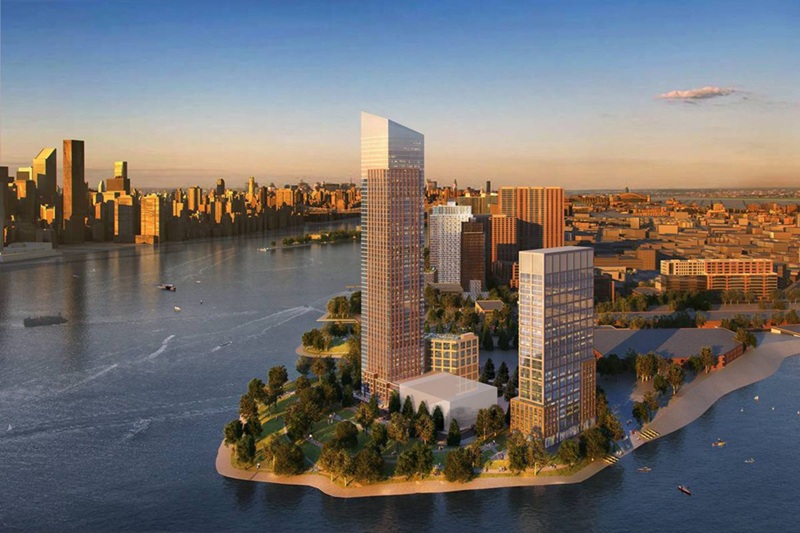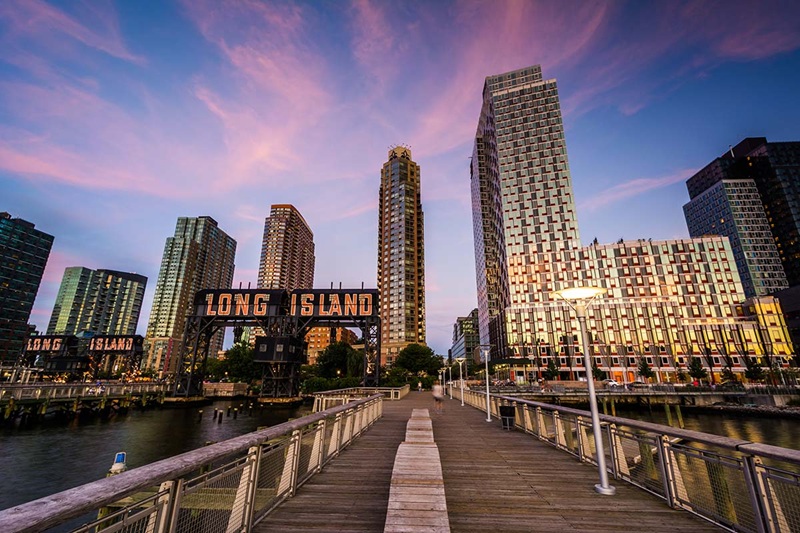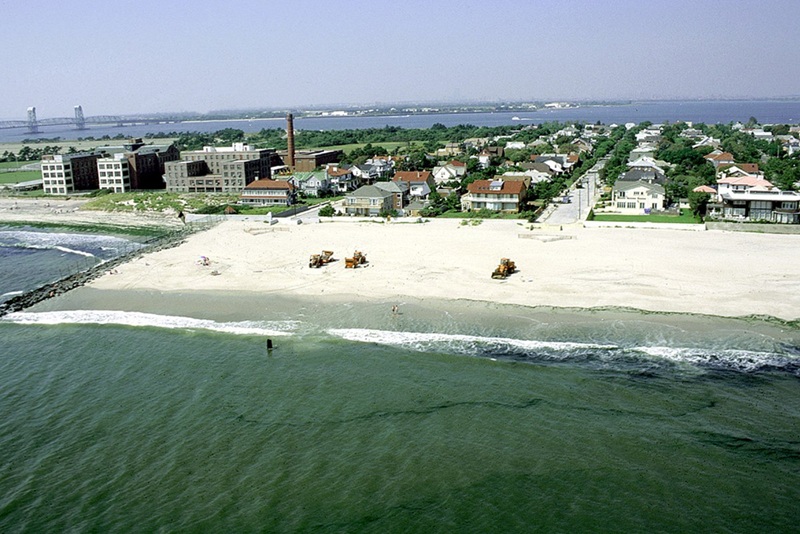
Nestled along the East River in the westernmost part of Long Island City, Hunter’s Point is a dynamic and rapidly evolving neighborhood that blends the old with the new. Known for its stunning waterfront views, historic charm, and proximity to Manhattan, Hunter’s Point is a hub of growth and development while maintaining a strong sense of community. Once an industrial area, the neighborhood has transformed into a sought-after destination for professionals, artists, and families alike.
Location and Accessibility
Hunter’s Point is located in Long Island City, situated directly across the East River from Midtown Manhattan. The neighborhood is bounded by East River to the west and Queens Boulevard to the east, with Gantry Plaza State Park offering beautiful views of the Manhattan skyline. This prime location allows residents and visitors to enjoy the best of both worlds—easy access to the city and a quieter, more relaxed atmosphere.
Hunter’s Point is well-connected to public transportation, making commuting to and from Manhattan convenient. The 7 subway line has several stations in the area, including the Hunter’s Point Avenue and Vernon Boulevard-Jackson Avenue stations, offering direct access to Grand Central Station in less than 10 minutes. Additionally, the Gantry Plaza State Park ferry terminal provides ferry service along the East River, offering a scenic commute to Manhattan and other parts of Queens.
A Blend of History and Modern Development
Historically, Hunter’s Point was a center for shipbuilding and industry. The neighborhood got its name from the Hunter’s Point Shipyard, which was established in the 19th century. The shipyards played an important role in the construction of ships for both military and commercial purposes. Over the years, the area became increasingly industrialized, but as these industries moved elsewhere in the mid-20th century, Hunter’s Point began to experience significant changes.
Today, Hunter’s Point is undergoing rapid gentrification, with former industrial buildings being transformed into modern residential complexes, art spaces, and commercial developments. The influx of new developments, along with the preservation of some older industrial structures, has helped to create a vibrant mix of old and new.
The neighborhood’s evolution is most visible in the Hunter’s Point South area, a major development project that includes luxury high-rise apartments, parks, and retail spaces. This revitalization has made Hunter’s Point a desirable destination for those looking for modern living spaces with unparalleled views of the Manhattan skyline.
Waterfront Living and Green Spaces
One of the defining features of Hunter’s Point is its access to the East River waterfront. Gantry Plaza State Park, located along the waterfront, is a beloved green space that offers stunning views of Manhattan, the Queensboro Bridge, and the United Nations Headquarters. The park features lush lawns, piers, playgrounds, and walking paths, making it an ideal spot for relaxation, picnicking, and outdoor activities.
Gantry Plaza State Park is also home to historic gantries, large crane structures that were once used to load and unload cargo from ships in the shipyards. These iconic remnants of Hunter’s Point’s industrial past provide a unique and photogenic backdrop for visitors to the park.
In addition to Gantry Plaza, the neighborhood is close to other green spaces, such as MoMA PS1, an extension of the Museum of Modern Art that regularly hosts art exhibitions, and Hunter’s Point South Park, a new waterfront park featuring playgrounds, athletic fields, and walking paths. These parks contribute to the neighborhood’s reputation as an area that combines modern living with access to nature.
Real Estate and Market Trends
Hunter’s Point has seen a significant increase in real estate development in recent years, particularly with luxury apartment buildings along the waterfront. New developments in the area cater to young professionals, families, and those seeking the combination of urban convenience and scenic views.
Luxury condominiums and rental buildings, especially in the Hunter’s Point South development, have reshaped the real estate landscape. These modern buildings offer high-end amenities, such as rooftop terraces, fitness centers, and swimming pools, attracting those looking for a more upscale living experience in Queens.
Despite the upscale nature of much of the development, Hunter’s Point has also retained some affordable housing options, making it more accessible to a broader range of residents. The combination of luxury high-rises and more affordable buildings adds to the neighborhood’s diversity and charm.
With continued development and the increasing popularity of Long Island City as a residential and business hub, real estate prices in Hunter’s Point are expected to keep rising. However, the neighborhood is still more affordable compared to other parts of Manhattan, making it an attractive option for those looking for an urban lifestyle at a lower cost.
Community and Demographics
Hunter’s Point is a rapidly gentrifying neighborhood that has become increasingly popular with young professionals, artists, and families. Its proximity to Manhattan makes it an appealing option for those working in the city, while its evolving arts scene and vibrant cultural life attract creative individuals.
The neighborhood has also become home to a diverse community of residents, including both long-time families and newcomers. The influx of young professionals, particularly in the tech and creative industries, has brought a fresh energy to the area, and the community remains open and inclusive, with a mix of long-time residents and newcomers from all over the world.
Local businesses in Hunter’s Point cater to a wide range of tastes, with cafes, restaurants, and bars popping up alongside more established neighborhood stores. Vernon Boulevard, the main thoroughfare in Hunter’s Point, has become a popular destination for dining and shopping, with everything from trendy eateries to local artisan shops.
Education and Amenities
Hunter’s Point is part of School District 30 and is served by a number of public and private schools in the area. As the neighborhood grows, so does its educational infrastructure, with new schools planned for future development. In addition to public schools, the neighborhood is close to specialized educational institutions and cultural centers, such as the LaGuardia Community College in Long Island City, offering further educational opportunities.
In terms of amenities, Hunter’s Point is close to MoMA PS1, which provides cultural enrichment and art exhibitions. It’s also close to the vibrant neighborhood of Astoria, offering additional dining, shopping, and entertainment options, as well as the Museum of the Moving Image and a growing arts district.
The Future of Hunter’s Point
Hunter’s Point is in the midst of an exciting transformation, with new developments bringing modern conveniences and luxury living to the area. Its proximity to both Manhattan and major transportation hubs, along with its waterfront views, will continue to make it one of the most attractive neighborhoods in Queens for the foreseeable future.
As Long Island City continues to grow, Hunter’s Point is expected to evolve into an even more dynamic and diverse community. New residential, commercial, and cultural developments are expected to bring even more vibrancy and amenities to the neighborhood, making it an increasingly appealing destination for both residents and businesses.
Conclusion
Hunter’s Point, Queens, offers a rare combination of historic charm, modern living, and scenic waterfront views. With its easy access to Manhattan, thriving arts scene, diverse community, and expanding green spaces, it’s no wonder that this neighborhood has become one of the most desirable places to live in Queens. Whether you’re drawn to its exciting transformation, its close proximity to the city, or its commitment to blending the old and new, Hunter’s Point provides a unique and vibrant living experience in one of New York City’s most dynamic boroughs.

